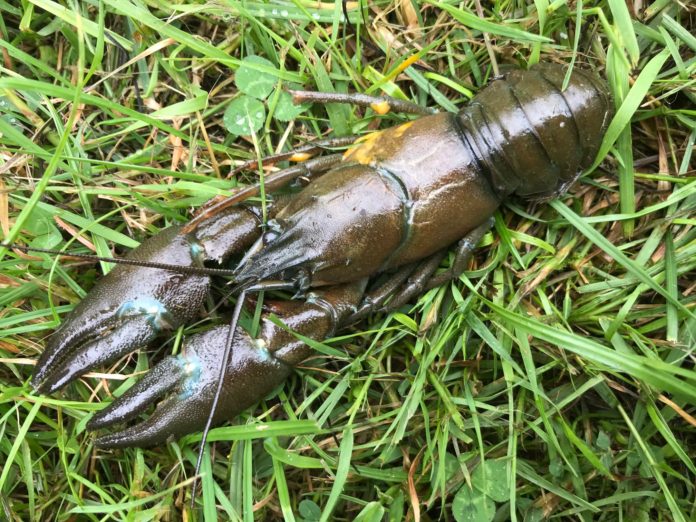It’s a cold, dank day, with a vicious Northerly wind blowing down the valley. Hardly what I’d expect for the last day of June. I’m on the Bure by 9am, and I’m struck yet again by how murky the water has become, something I noticed these last ten years at the least. This is NOT scientific. My notes from the last century suggest the upper Bure then was as clear as the Test, a river I was fishing a lot at that time. That is certainly not the case now, even though there has been very little rain these last days or weeks.

I’m feeling rather down. Perhaps it is the weather, perhaps the fact that my camera of decades has finally collapsed on me, and I’m having to use my iPad to record events. Nor have I really got the kit I need, my own fault of course. I had meant to pack a net and trays for sampling, but goodness knows why they were forgotten. I’ll do my best.
I notice, once again, that all the weed types are coated in a rusty brown film. I get in the water and find I can slide off material that feels like fine soil… perhaps it is. The overall impression is of vague ill health, but again I’m aware I’m hardly being objective.
What I do find is a super-abundance of signal crayfish, and not a sign of a white clawed. Nothing new or unexpected there, and most Norfolk upper rivers hold them. Here I guess their only predator is the otter (and I do find endless bits of crayfish discarded by the animals). At least lower down the Bure there are plentiful chub and pike that make inroads into the population. Of course, there are dark suspicions about the “crayfish effect”. Do they eat trout eggs dramatically? Do they destroy invertebrates? Do they destabilise weed growth, like they do the river banks?
Of course, fly life is one of the big questions. My handbook back in ‘81 was An Angler’s Entomology by J.R.Harris in the Collins New Naturalist Series, and I still have a copy today. Then, inspired by Clarke and Goddard, I was totally immersed in the subject… before I met Stuart Crofts who made me realise what an amateur I truly was. I do remember Tim Gaunt-Baker, that Norfolk fly Titan, conducting a kick sample investigation about twenty years ago, and turning out a plethora of goodies… caddis, olives, shrimps, snails, nymphs of all sorts… until his tray was a seething brown ball.
Today, I am nowhere nearly as well equipped or professional. I grope around under stones and into woodpiles, and find bits and bobs… some shrimps, some snails, but not a lot. There are a good few emptied swan mussel shells, but I suspect that these have been brought from nearby lakes to be eaten in the privacy of the river?
By 2pm, wet through, I give up. You can lose heart on these river quests, and it’s good to leave before depression sets in and colours your judgement. Tomorrow is another day, my final one. I’ll try to make some sense of it then, at least to my own satisfaction.


Please help us share this article:
Credit: Source link




























